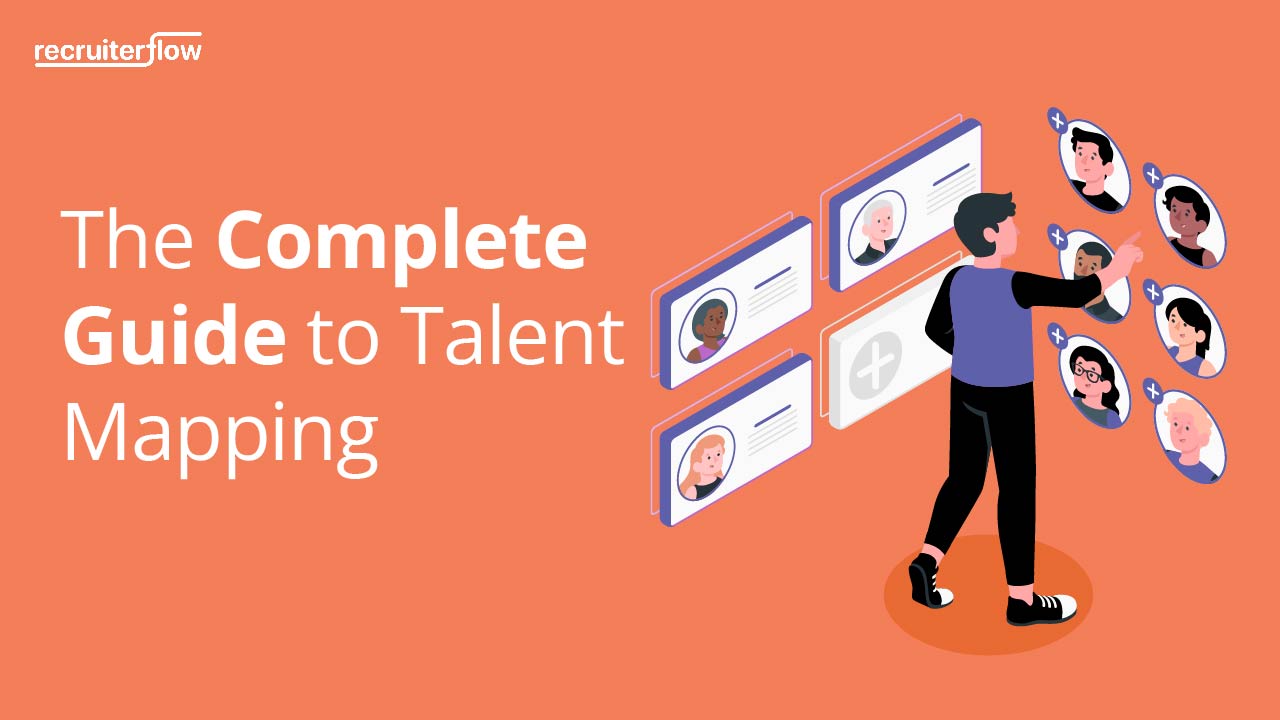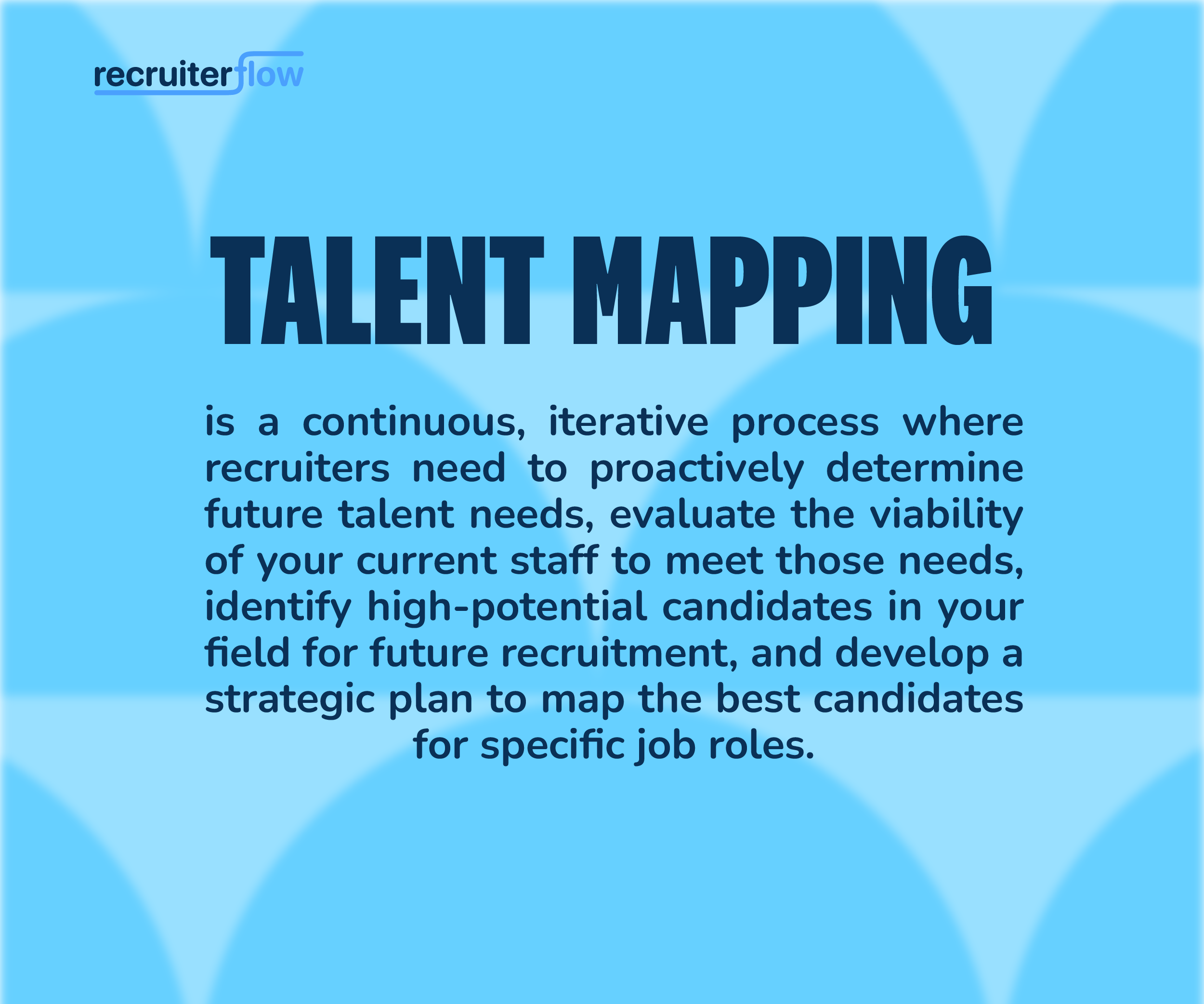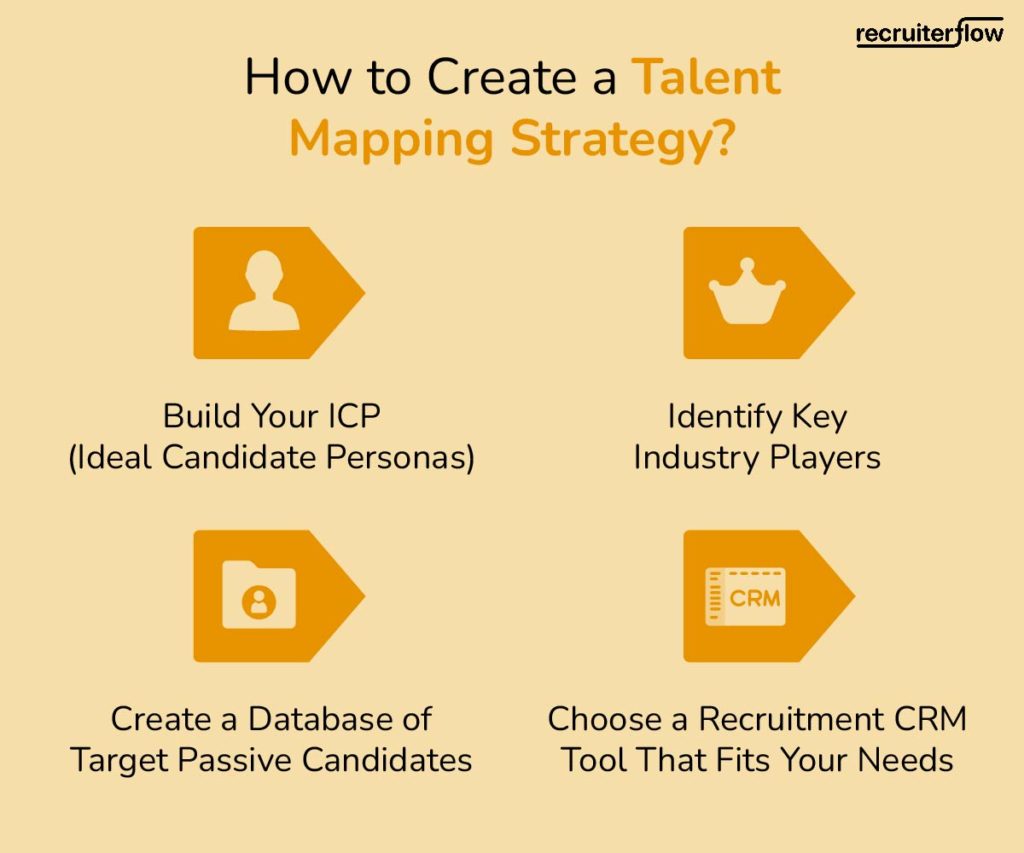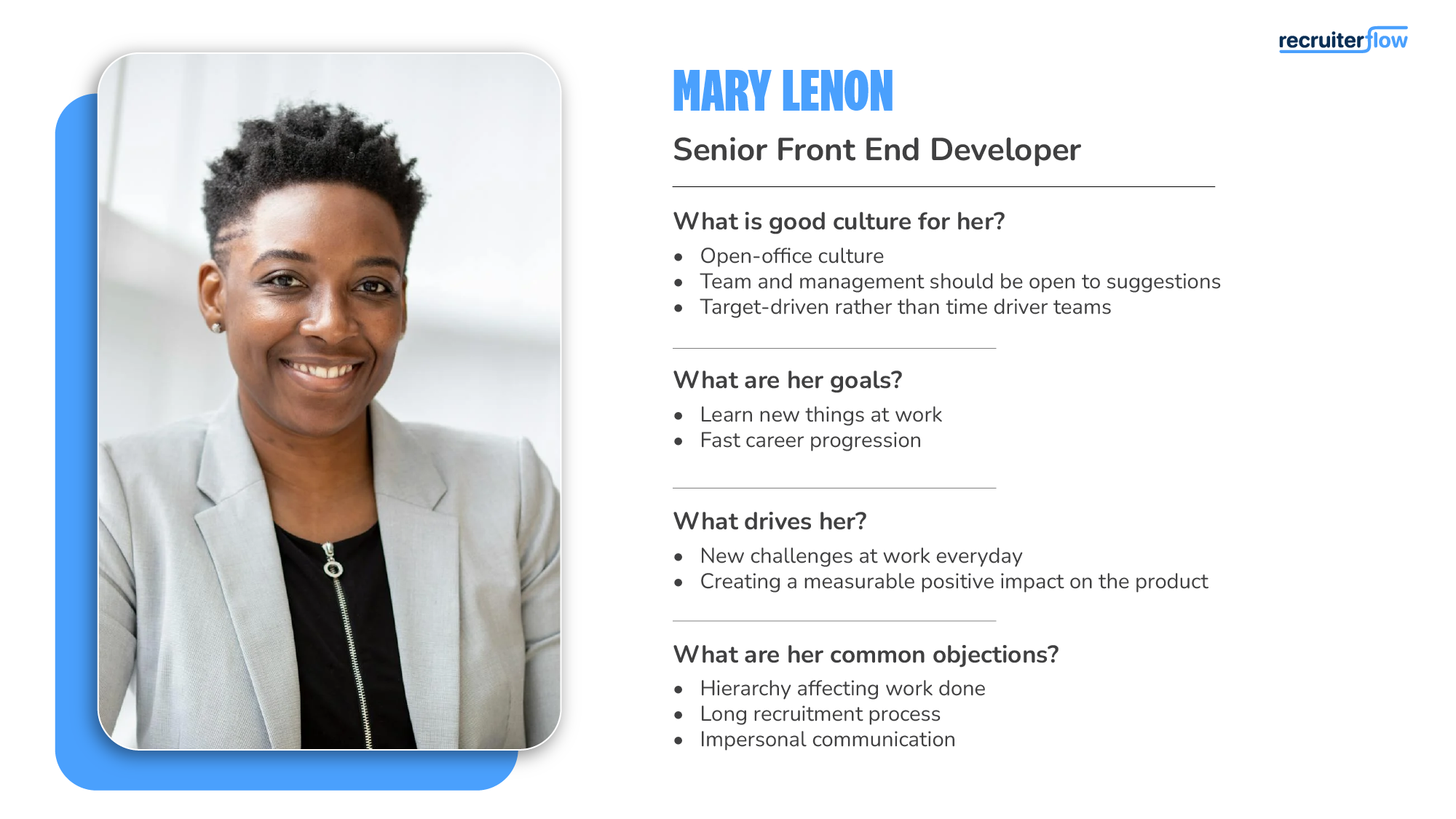
Talent Mapping in 2025 – Complete Guide

The recruiting industry is evolving rapidly, with each day bringing a new challenge. Take, for instance, the evolution of AI. From screening and sourcing to engagement and decision making, there’s an AI-first solution in place for everything.
On the other hand, we have recruitment trends changing every quarter. Last year, we saw an increase in contract hiring and a substantial drop in permanent hiring—29% to be precise.
Irrespective of the changing trends, one thing is unchanged–companies want to attract top talent. To keep up with these changes, traditional recruitment practices aren’t enough. Creating a candidate pipeline proactively is the key to outrunning the competition. That’s where Talent Mapping comes in.
In this guide, we will cover:
- What is talent mapping, and why is it important in 2025?
- How recruiters can leverage talent mapping
- How to build a pool of passive candidates
- Why talent mapping is better suited for recruiting agencies than in-house TA teams
- Tools you can use for Talent Mapping
What is Talent Mapping?
Talent mapping is a continuous, iterative process of researching, identifying, and proactively engaging candidates. It is a forward-looking strategy, i.e., it isn’t done for immediate hiring requirements but for upcoming opportunities.

Talent mapping takes a long-term approach, rather than meeting monthly hiring goals or immediate requirements. Moreover, it helps agencies understand their competitors and get insights into critical information such as size, structure, organization design, top talent, and employer brand reputation. This helps hiring managers make strategic decisions and use recruiting best practices for hiring top talent.
Importance of Talent Mapping
The role of a recruiting agency has changed from ‘filling roles’ to ‘solving a talent problem’. This makes Talent Mapping a ‘must-have’ and not a ‘nice-to-have’. Here’s why:
- The demand war is moving faster than ever
Roles are evolving rapidly, and so is their demand. According to reports, 85% of employers plan to invest in upskilling initiatives, 70% plan to hire for new skill sets, and 40% anticipate workforce reductions due to skills mismatch. For recruiting agencies, having an updated talent database is thus key to serving these demands on time. - Skill-based Hiring is on the rise
Yes, as companies report skill mismatch, it’s paramount to have candidates who meet all the parameters. Talent Mapping helps recruiters build a pipeline of highly skilled and relevant candidates. - A Strong Pipeline
As the demand for talent continues to become unpredictable, it is paramount for recruiters to be prepared. Talent mapping helps in building a strong recruiting pipeline, translating into a faster TAT for clients. - Employer Branding
The heart of a recruiting business is building a lasting reputation with clients and candidates. Trust brings repeatability and unlocks scale. Talent mapping is a great way to not only build relationships but also strengthen the agency as a trusted partner to solve a talent problem. Creating engaging digital magazines featuring candidate success stories further enhances this reputation-building process.
How to Create a Talent Mapping Strategy?
As a company grows, its hiring needs change, opening a mixed bag of opportunities for recruiting agencies. In this section, we’ll look at how to create a talent mapping strategy that sits at the intersection of a company’s existing and future hiring needs, and also dive into specific strategies that recruiters can use to take it to the next level.

Build Your ICP (Ideal Candidate Personas)
An ideal candidate persona will look different depending on the company’s industry, their existing job positions, requirements for experience and skillsets, and salary range. A good way to get started is by conducting an intake meeting with the hiring manager.
The more you know about their expectations and requirements, the easier and faster you can hire the right candidate for them. You can then brainstorm these qualities on a digital whiteboard and save your notes to create your ICP.
A candidate persona is a composite sketch of a key segment of your candidate pool. For recruitment purposes, you need personas to help you create strategies that will be most useful and relevant to sourcing ideal candidates for a vacancy.
Here’s an example of an ideal candidate persona:

Once you have the initial ideal candidate personas in place, you can always come back, tweak things, and move ahead as requirements change.
Moreover, there are various ways to create a candidate persona. Here is a very simple breakdown of the key steps you need to take to build your ideal candidate persona:

Talent mapping: How to create a candidate persona for your recruiting process?
At the core of it, an ideal candidate persona serves as a benchmark or guideline to help your team of recruiters hire better candidates.
You then have various roles and responsibilities you could create an ICP. In addition, you need to get involved in competitor analysis, track their hiring strategies, as well as identify key industry trends to create ICPs.
Again, this is an overview of creating ideal candidate personas. This will vary depending on your client’s company size, budget, existing workforce, talent gaps, and future hiring needs.
Identify Key Industry Players
Understanding what an organization’s competitors are doing differently can help set your talent mapping strategy in the right direction. As a result, you can make your strategy leaner and more effective. This means you’re better equipped to position your company as an employer of choice and attract top candidates.
Here’s a simple breakdown of how you can identify what’s working for a company’s key industry players:
Analyzing competitors is not only about identifying their patterns or workflows. It’s also about assessing your strengths and weaknesses when it comes to hiring. You can uncover opportunities to improve specific processes like making the application process more seamless, using automation to make sure candidates stay updated, and even improving the onboarding process.
Create a Database Of Target Passive Candidates
According to a LinkedIn report, passive talent makes up 70% of the global workforce. That means building a pool of top potential passive candidates is a must today.
Companies can no longer have a response-based approach where they start looking for candidates only after the need arises. And when you’re creating a talent mapping strategy, building this pool of candidates is a primary step that will help you find the perfect candidates with much better efficiency.
Also Read: How to source and recruit passive candidates
It’s important to understand that creating a pool of passive candidates isn’t just a checklist in your hiring process. It’s what will set the course right for a company’s future hiring needs, align their existing candidate sourcing strategy to the market, help you hire better candidates, and recruit top-level executives in an easier and quicker manner.

How to build a talent pool of passive candidates
There are many ways you can target passive candidates. One of the key channels is social media. Platforms such as LinkedIn, Twitter, and Facebook groups help you leverage advanced search functionality, use industry-specific keywords, skills, and experience, and refine your search based on location and other important factors to look for in passive candidates.
One way to build a passive talent pool is through outreach. Tools like Recruiterflow offer advanced outreach capabilities that can improve your response rate by up to 60%.
For instance, you can use the Chrome extension to find candidate data and add it to the dashboard in a single click. Then, you can run automated recipes and send personalized communication across email, text, SMS, social media, etc.
Using omnichannel sequences, recruiters can create an effective process to map candidates who convert.
Also read: Sourcing vs Recruiting: What are the differences?
When it comes to Talent Mapping, companies are often caught between doing it in-house vs outsourcing it to a recruiting agency. Before we go further, let’s address the most common question associated with Talent Mapping: Why do companies need recruiting agencies for talent mapping?
There are four main reasons why recruiting agencies are critical for talent mapping:
1. Stronger ability to hire top candidates from the marketplace
Recruiters have access to a large talent pool of candidates with varied backgrounds, skill sets, expertise, demographics, and preferences. This puts them in a better position to hire the top candidates from the marketplace. Also, they have a greater ability to identify talent to fill your niche and more senior positions quickly.
2. Streamlined hiring process with the latest technology
Okay, let’s be honest here. While companies might be stuck with a legacy system, an agency will have dedicated tools to do this better. A recruiter uses recruitment agency software like an ATS and recruitment CRM to automate and streamline the hiring process. This reduces the likelihood of manual errors and delays in communication and allows for a smooth candidate experience.
3. Competitive Advantage
Companies heavily invested in uncovering their competitors’ marketing strategies, business processes, and whatnot. But they miss out, or rather underestimate the importance of conducting competitor analysis when it comes to recruiting strategies.
A recruiter can capture valuable information and help you identify strengths that can act as counterpoints to your competitors’ weaknesses. This way, companies can compete for quality candidates and strengthen their own recruitment efforts.
4. Specialized knowledge with improved future hiring strategies
Recruiters often specialize in certain areas of business. They’re able to map out the current marketplace as well as strategize for future hiring needs of a company. Companies can always rely on agencies to hire good candidates, whether at junior levels or executive levels, and be assured of the process.
The best part? Creating a talent mapping strategy with agencies doesn’t come at the expense of cost or quality of hires, all while remaining scalable for a company’s future hiring needs.
How To Choose The Right Recruitment Tool For Your Agency?
Your ideal software for mapping talent effectively should pass the following parameters:
- Unified ATS & CRM
Creating a talent pool is not just about dumping links on an excel sheet or a system. You should be able to monitor updates quickly with minimum manual work and shuffling between tools. A unified ATS & CRM like Recruiterflow helps you manage candidate lifecycle stages, create custom tags and segments, and track progress. - AI Sourcing and Screening
If your AI only answers questions, it’s not enough. Companies like Robert Half and Korn Ferry and investing heavily in AI sourcing and screening capabilities. AI screening gives recruiters the freedom to focus on conversations while the AI looks for all the necessary information. It also helps in reducing bias and promoting DE&I. - Advanced Search Capabilities
When you are dealing with a vast amount of candidate data, it is difficult to keep track. Advanced search capabilities help you segment and find candidates quickly ensuring you waste minimal time looking for the right candidates when the time comes. - Omnichannel Outreach
In this digital era, candidates are spread across multiple platforms. Gone are the days when email was the primary source of communication. Omnichannel outreach gives you the power to engage candidates where they are. Recruiterflow lets you create personalized outreach campaigns across email, SMS, WhatsApp, and social platforms. No matter where your ideal candidate is, you can reach them at the right time, with the right information.
How Recruiterflow Can Help Recruiting Agencies With Talent Mapping
Recruiterflow is an AI-first RecOps platform built for agencies to scale with data. The automations and recipes are intuitive, ensuring personalization at scale.
Functionalities like AI screening and sourcing help recruiters find prospects proactively without having to look at each profile. When combined with recipes, recruiters can reach prospective candidates where they are, creating a strong pipeline.
Also read: The Complete Guide to AI Sourcing
BONUS: Talent Mapping Templates for Recruiters
We’re constantly working to improve hiring processes for recruiters. And one of the key differentiators that truly enhances the speed and efficiency of recruiting is using templates.
Check out these talent mapping templates from Creately.
Final Thoughts
Today, recruiting continues to evolve as organizational demands and job seekers’ expectations change. While companies need to constantly upgrade their hiring strategies to align with their business goals, agencies need to be on their toes to ensure they aren’t left behind. Talent mapping plays a pivotal role in these transformations.
Talent mapping is not a one-and-done activity. It is an iterative process that ensures agencies are always prepared for the rainy day. From a company’s perspective, when an agency has a fresh talent pool, it increases the repeatability of job orders — a win-win for both.
Recruitment





Akshad